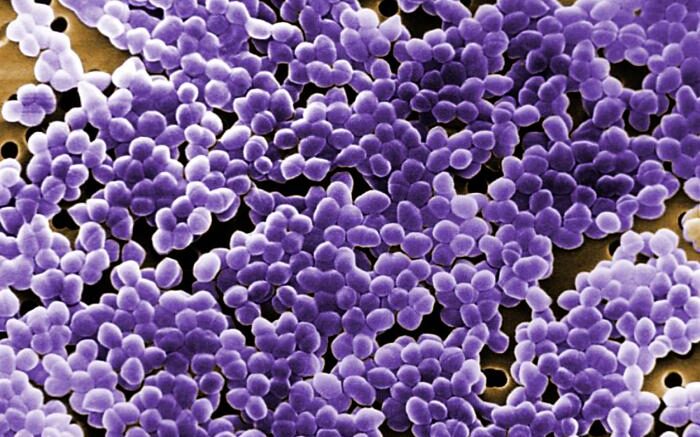Admission to a room previously occupied by patients carrying environmentally robust pathogens implies an increased risk of acquiring those pathogens. Therefore, ‘No-touch’ automated room disinfection systems, including devices based on UV-C irradiation, are discussed to improve terminal cleaning. It is still unclear if clinical isolates of relevant pathogens behave differently under UV-C irradiation compared to laboratory strains used in the approval process of disinfection procedures. In this study Knobling, et al. (2023) analyzed the susceptibility of well characterized clonally divergent vancomycin-resistant enterococci (VRE) strains, including a linezolid-resistant isolate, against UV-C radiation.
Susceptibility against UV-C of ten clonally divergent clinical isolates of VRE was determined in comparison to the commonly used test organism Enterococcus hirae ATCC 10541. Ceramic tiles contaminated with 105 to 106 colony forming units/25 cm² of the different enterococci were positioned at a distance of 1.0 and 1.5 m and irradiated for 20 s, resulting in a UV-C dose of 50 and 22 mJ/cm², respectively. Reduction factors were calculated after quantitative culture of the bacteria recovered from treated and untreated surfaces.
Susceptibility to UV-C varied considerably among the strains studied, with the mean value of the most robust strain being up to a power of ten lower compared to the most sensitive strain at both UV-C doses. The two most tolerant strains belonged to MLST sequence types ST80 and ST1283. The susceptibility of the laboratory strain E. hirae ATCC 10541 ranged between the most sensitive and most tolerant isolates for both irradiation doses. However, for UV-C dose of 22 mJ/cm², the reduction of the most tolerant isolate of ST1283 was statistically significantly lower compared to E. hirae ATCC 10541. The most susceptible strains belonged to the MLST sequence types ST117 and ST203.
The researchers say their results indicate that UV-C doses reported in the literature are sufficient for the reduction of commonly used reference strains of enterococci but could be insufficient for the reduction of tolerant patient VRE-isolates in a hospital setting. Therefore, for future studies, the most tolerant clinical isolates should be used to validate automated UV-C devices or longer exposure times should be expected to ensure efficacy in the real world.
Reference: Knobling B, et al. Tolerance of clinical vancomycin-resistant Enterococcus faecium isolates against UV-C light from a mobile source. Antimicrobial Resistance & Infection Control. Vol. 12, article number 63 (2023).
